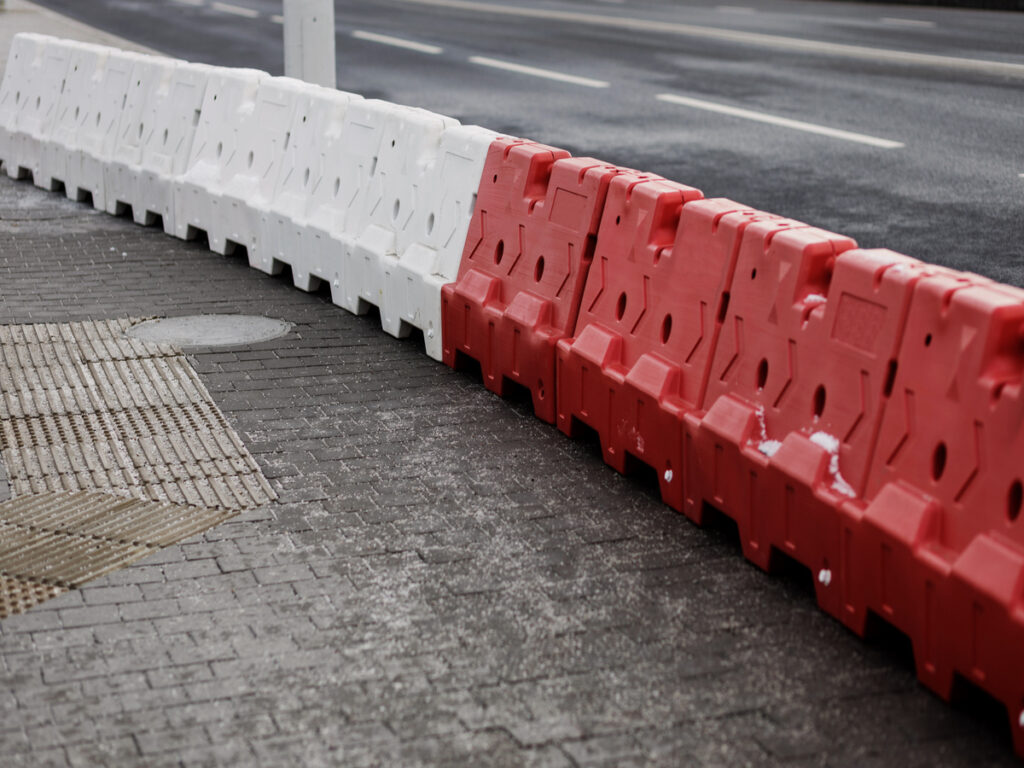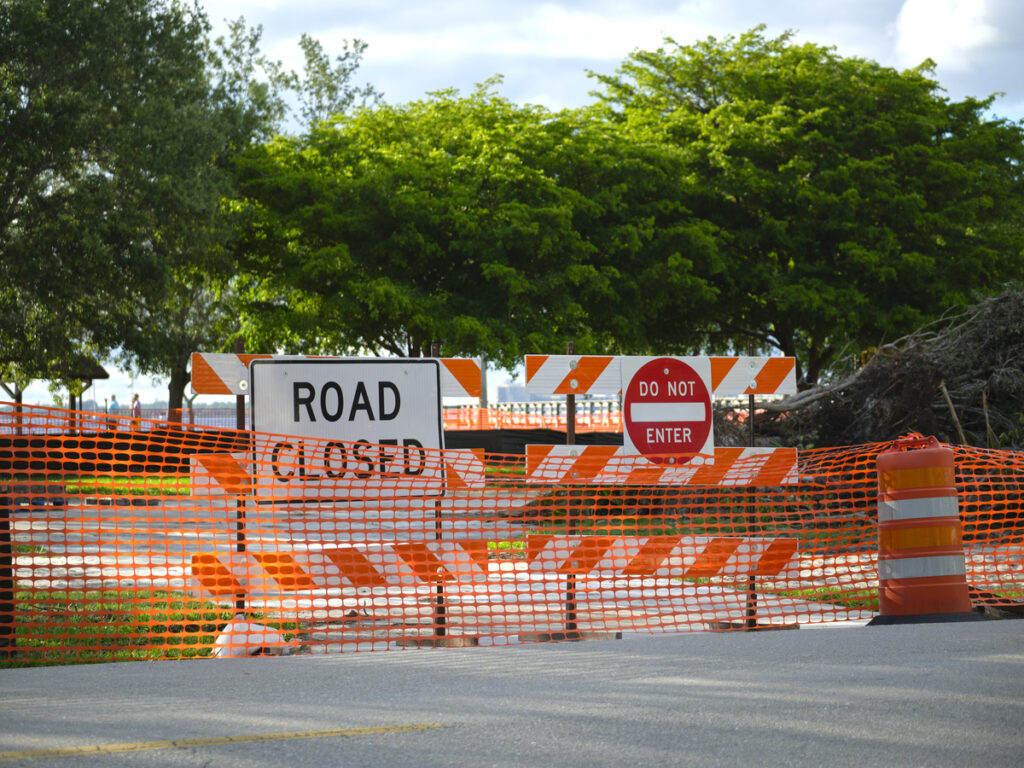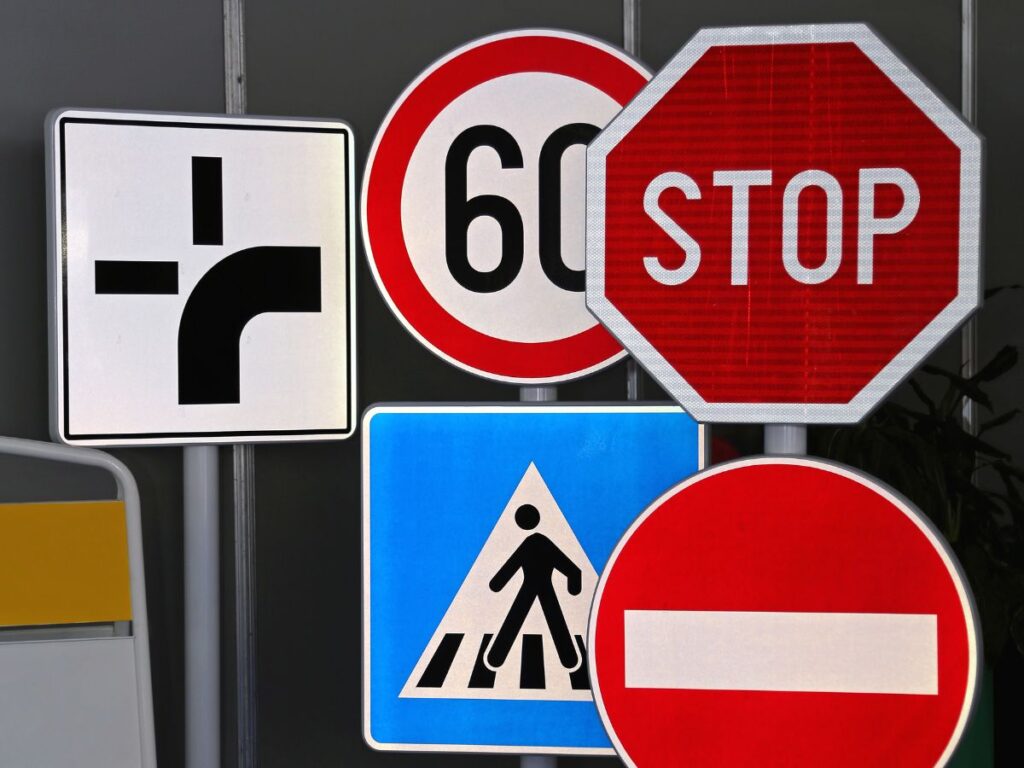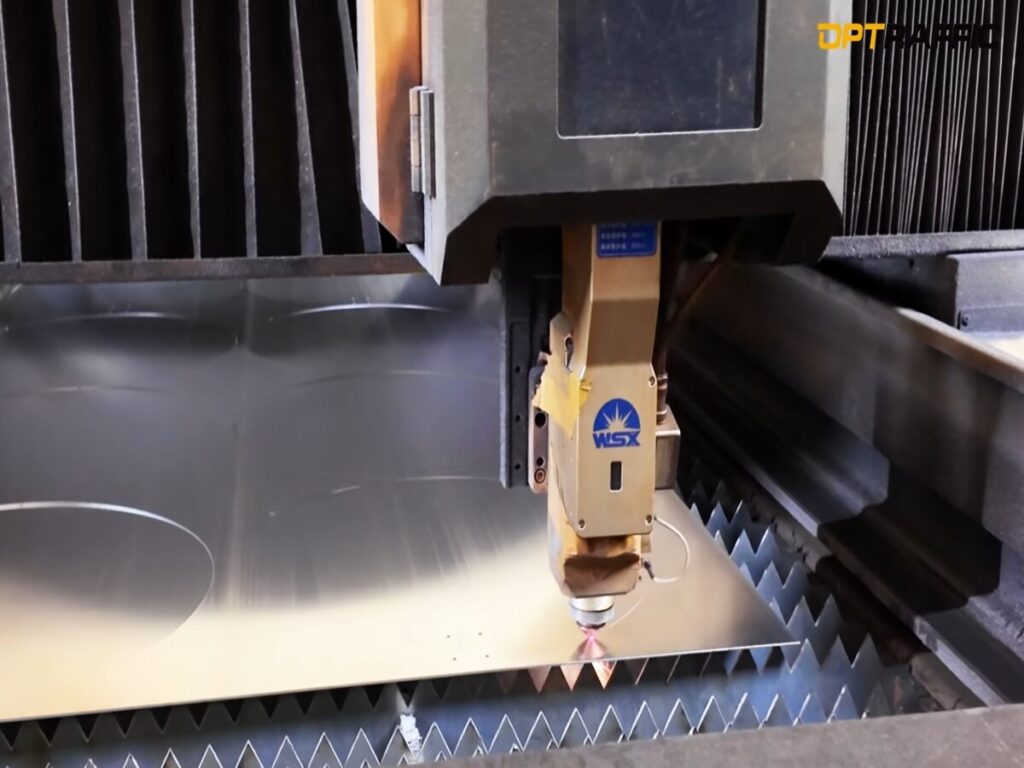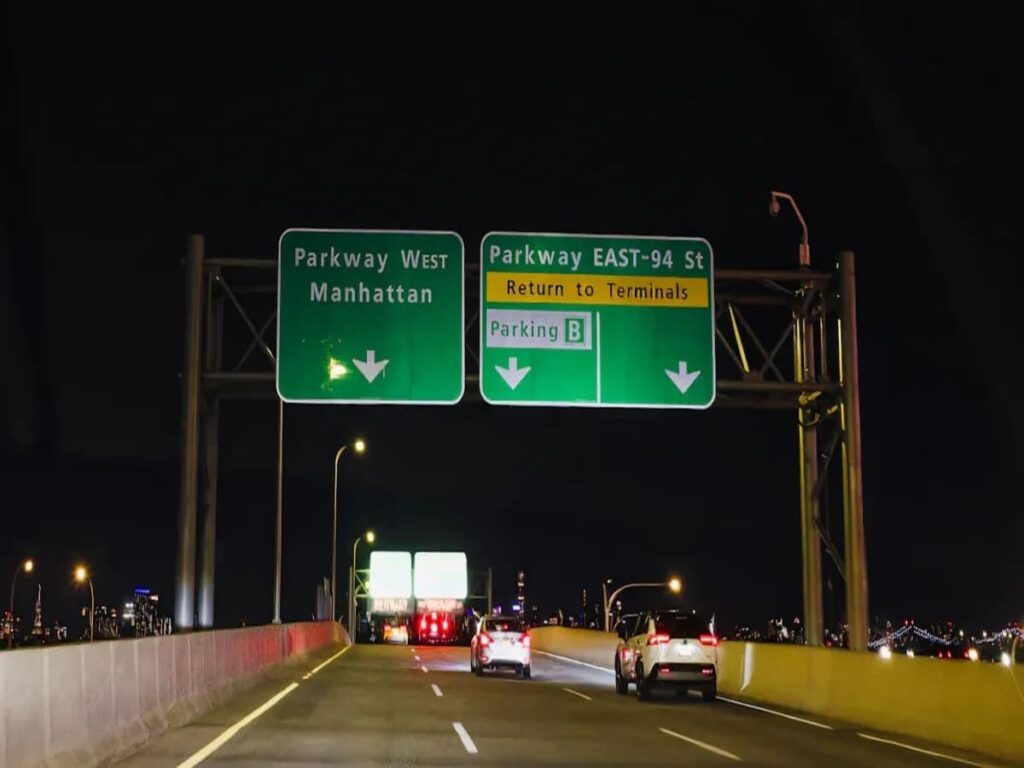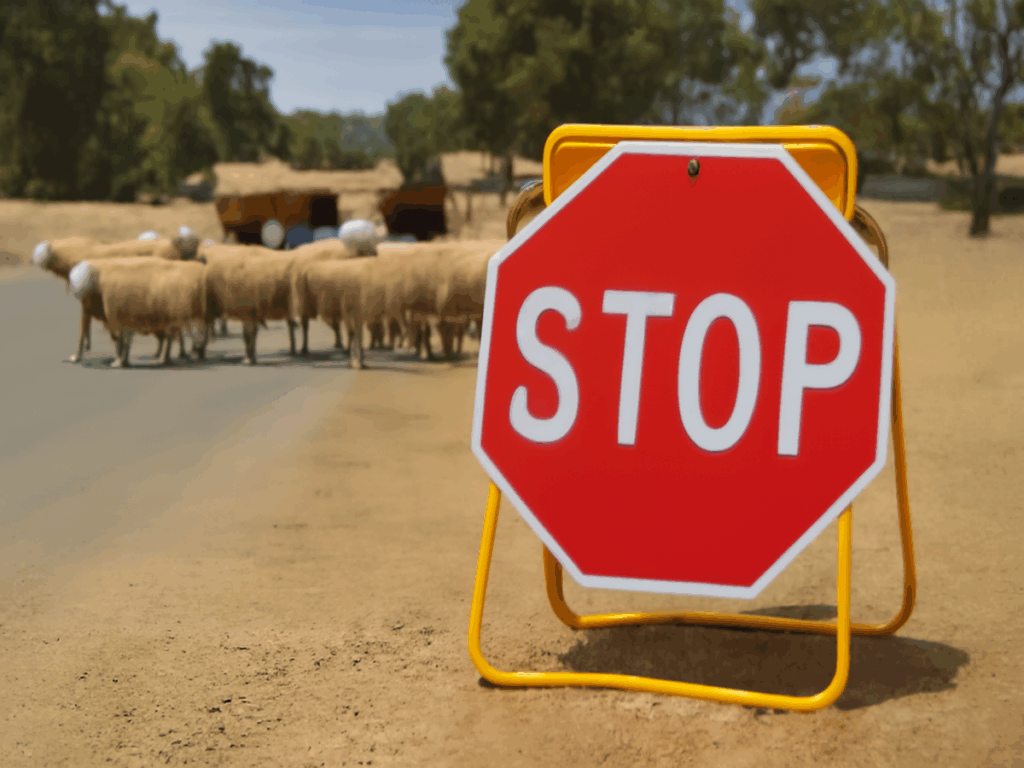
権利を選択します 安全標識 at a stock crossing helps keep people safe. 農民と運転手は、動物が交差しているときにのみ、折りたたみ停止標識を使用する必要があります. 彼らは動物が交差した直後にこれらの兆候を取り下げなければなりません. 永続的な与える標識は、動物が頻繁に交差し、あなたがはっきりと見ることができる交差点に適しています. 選択は、動物がどのくらいの頻度で交差するかに依存します, 道路を使用する車の数, そして、地元のルールが言うこと. 下の表は、正しい兆候と信号を使用することを示しています, 特に車がたくさんあるとき, クラッシュを半分以上削減できます:
| Crossing Condition | Mean Pedestrian Crashes per Year | Traffic Volume Context | 重要な調査結果 |
|---|---|---|---|
| No Pedestrian Signal | 0.36 | Various volumes | This is the crash rate when there are no signals |
| Exclusive Pedestrian Signal | 0.22 | High pedestrian and vehicle volumes | Crashes are much lower with signals than without (p=0.001) |
| No Pedestrian Signal vs Exclusive | 0.33 vs 0.15 | High volumes | Exclusive signals cut crashes by more than half (p=0.001) |
Classification of Stock Crossing Signs Under Australian Standards
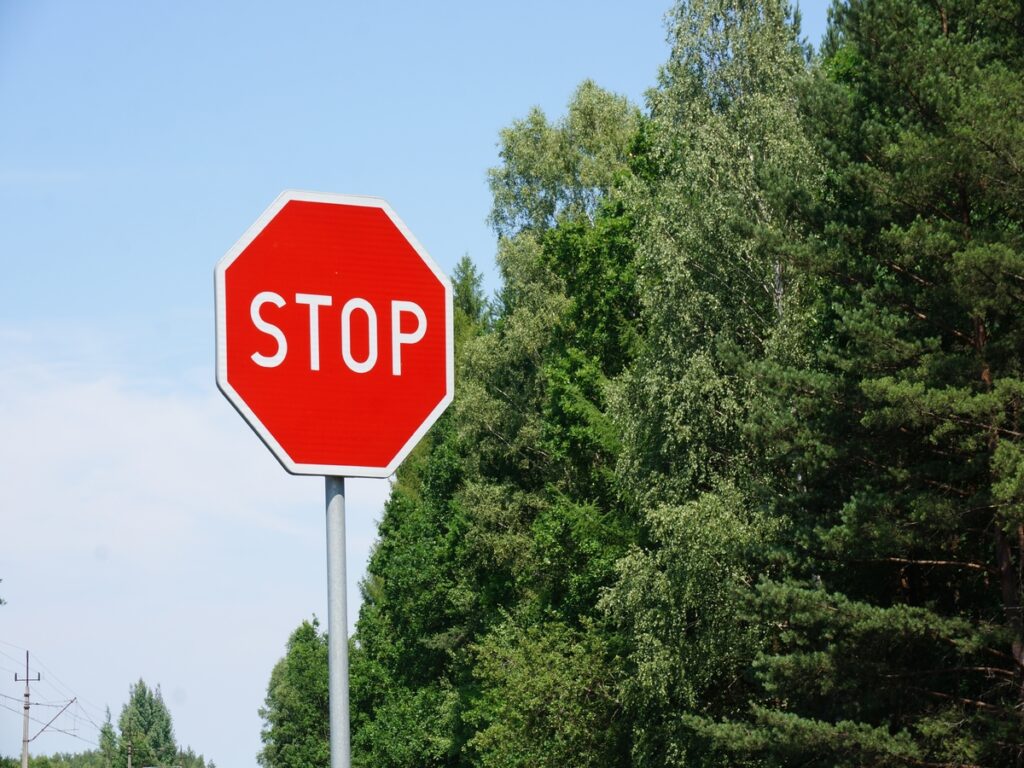
Regulatory sign categories under AS 1742.2
オーストラリア標準AS 1742.2 gives the rules for traffic signs at stock crossings. These signs are called regulatory signs. 規制標識は、ドライバーに彼らがしなければならないことを伝えます. They are not just for warning about dangers. These signs include stop and give way instructions. Warning signs only tell drivers about possible risks. Regulatory signs help control what drivers do. 彼らは誰にとっても道路をより安全にします.
Understanding the R1-V1 and R1-V6 codes
The codes R1-V1 and R1-V6 are for special regulatory signs at stock crossings. R1-V1 is the folding stop sign. People use this sign when animals need to cross the road. They fold it away after the animals have crossed. R1-V6 is the permanent give way to stock sign. This sign stays up all the time. It tells drivers to let animals go first if they are there. Both signs must follow strict rules for size, 色, and how well they reflect light. These signs help drivers know when to stop or give way. This makes country roads safer.
Purpose of regulatory stock signage in rural areas
Regulatory signs at stock crossings do many important jobs. They help control traffic and keep animals safe. These safety signs also help stop crashes. Many country roads have faded or missing signs. This can make it up to 40% harder to see them. のみ 69% of warning signs work as they should. Regulatory signs are needed to fill this gap. The table below shows how these signs help keep roads safe and protect animals:
| Quantitative Indicator | 価値 / 説明 | Relevance to Regulatory Stock Signage Purpose |
|---|---|---|
| Reflective performance decrease of faded signs | 15% に 40% 削減 | Shows why road signs need to be checked and replaced often. |
| Length of road sections with unclear markings | 6.1 km | Shows why clear regulatory signs are needed to guide drivers. |
| Proportion of effective warning signs | 69% | Shows that many warning signs do not work well, so regulatory signs are very important. |
| Speed limits in livestock crossing areas | 30 km/h | Shows how signs and speed limits work together to stop accidents. |
規制標識, along with warning and other road signs, help drivers slow down and pay attention. They are very important for keeping people and animals safe at every crossing.
Definition and Use Case of the Folding STOP Sign (R1-V1)
What is the R1-V1 folding STOP sign?
The R1-V1 folding stop sign is a special type of road sign used at stock crossings. Farmers or land managers can fold this sign up or down as needed. The sign shows the word “停止” in large, クリアレター. It uses bright colours and reflective material so drivers can see it easily, 夜でも. Folding stop signs help control traffic when animals need to cross the road. People use these signs only for short periods. They do not leave the stop sign up all the time.
Where and when to deploy folding STOP signs
People should use folding stop signs when animals are about to cross the road. A farm worker or landowner puts the sign up just before moving stock across. After the animals finish crossing, they fold the sign down straight away. This method keeps drivers alert and reduces confusion. Folding stop signs work best at crossings without permanent traffic lights or barriers. They suit places where animals cross at different times each day. Farmers often use these signs on quiet country roads.
ヒント: Always check that the folding stop sign is fully visible to drivers before starting the crossing.
Legal requirements for temporary STOP sign visibility
Australian law says that folding stop signs must only be visible during active crossings. ASのルール 1742.2 make this clear. If someone leaves the stop sign up when no animals are crossing, drivers may ignore real stop signs elsewhere. 事故の原因となる可能性があります. Councils may ask landowners to get training before using folding stop signs. Some areas need a permit for these signs. People must always fold the sign down after the crossing ends. This keeps the road safe and follows the law.
Definition and Application of the Permanent GIVE WAY TO STOCK Sign (R1-V6)
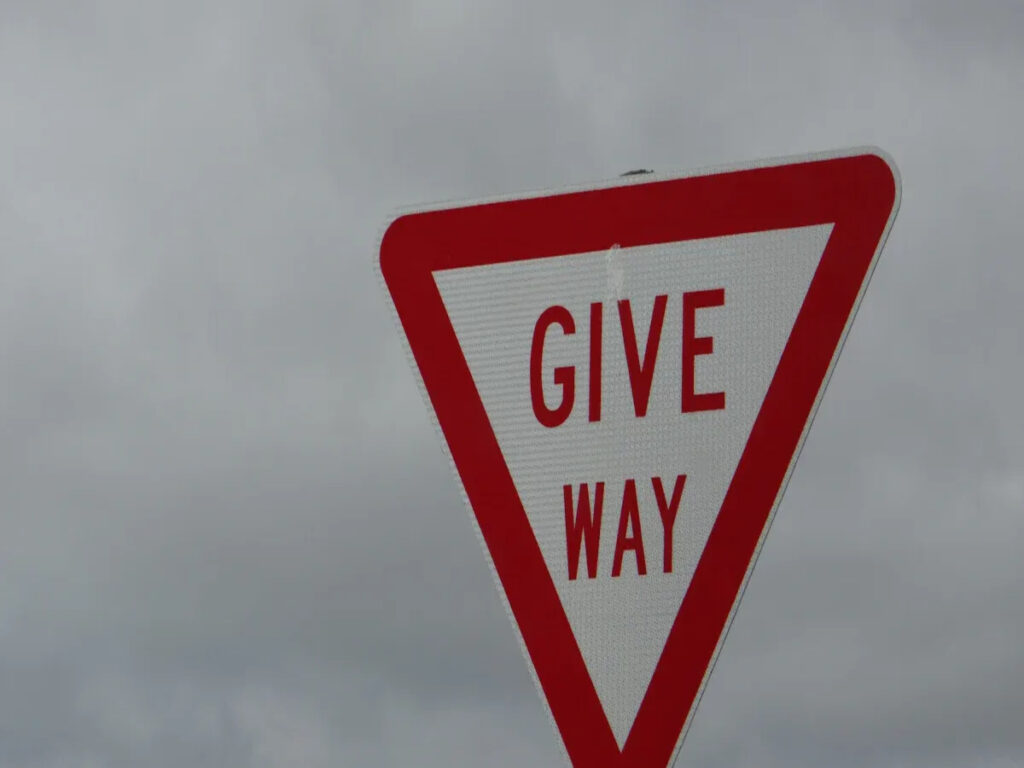
When is the R1-V6 sign appropriate?
The R1-V6 give way sign suits places where animals cross the road often. Farmers and land managers use this sign when animals move across the same spot many times each week. Drivers see the sign and know they must give animals a safe path. The give way sign works best where people can see the crossing from far away. Good visibility helps drivers slow down and prepare to stop if needed. Councils often choose this sign for roads with regular animal movement but not much traffic.
注記: The give way sign stays in place all year. It does not need to be folded away after each crossing.
Key differences from STOP signs in function and design
The give way sign and the stop sign have different jobs. The give way sign tells drivers to slow down and let animals pass if they see them. Drivers do not have to stop if the road is clear. The stop sign, 一方で, makes drivers stop every time the sign is up. The give way sign uses a different shape and message. It shows clear words so drivers know what to do. The stop sign is red and says “停止”, while the give way sign is white with black letters.
| 特徴 | GIVE WAY TO STOCK (R1-V6) | Folding STOP (R1-V1) |
|---|---|---|
| 使用 | 永続 | 一時的 |
| Driver action | Yield if stock present | 常に停止します |
| Shape and colour | 矩形, white/black | 八角形, red/white |
| 配置 | 修理済み | Folded up/down |
Common placement scenarios for permanent GIVE WAY signs
Land managers place give way signs at crossings with regular animal movement. These safety signs often appear near farm gates, cattle grids, or open paddocks. Roads with good sight lines work well for this sign. The give way sign also helps on roads where animals cross but traffic is not heavy. Councils may add extra signs or warning lights for busy roads. Farmers sometimes use the give way sign with other signs to make the crossing safer.
Drivers should always look for the give way sign and be ready to give animals the right of way.
Why STOP Signs Must Not Be Displayed at All Times
Safety risks of constant STOP sign display
If stop signs stay up all the time at stock crossings, it can be dangerous. Drivers might get confused if they see a stop sign but no animals or workers. This confusion can make drivers stop suddenly or hesitate. Sudden stops can cause cars to crash into each other from behind. Stop signs help slow cars and make people stop, but they do not work as well at night or in fog. Some drivers might ignore stop signs if they do not see a reason to stop. Warning signs alone do not always stop accidents. It is important to use the right sign at the right time to keep everyone safe.
- Drivers might ignore stop signs if they see them too much and there is no real danger.
- Stopping when it is not needed can make traffic pile up, especially on busy country roads.
- 夜に, it is harder to see signs, so accidents can happen more easily.
Driver behaviour and compliance challenges
Drivers act differently if stop signs are always up. A study with cameras in cars found that 36% of risky driving happened when drivers did not stop properly. The table below shows some mistakes drivers make at stop signs:
| Driver Error | 説明 | リスクレベル |
|---|---|---|
| Incomplete stop | Driver slows but does not stop | 高い |
| False start | Driver stops, then moves too soon | 中くらい |
| No attempt to stop | Driver ignores the sign completely | 非常に高い |
Some drivers, like young people or truck drivers, may think stopping is a waste of time. They might not stop if they do not see any danger. This makes it harder to keep everyone safe at crossings.
Traffic flow and legal liability issues
Leaving stop signs up all the time slows down traffic and can cause legal trouble. If drivers must stop every time, even when no animals are there, traffic moves slowly for no good reason. This can make drivers angry and they might try to pass other cars in a risky way or just ignore the signs. If a crash happens because a stop sign was left up when it should not have been, the farmer or council could get in trouble with the law. Warning signs should only tell drivers about possible dangers, not control traffic all the time. Using stop signs the right way helps stop accidents and keeps everyone safe.
How Landowners Operate Folding STOP Signs
Manual and assisted deployment options
Landowners have a few ways to put up folding stop signs at stock crossings. Some do it by hand. A worker walks over and lifts the sign before animals cross. Others use tools to help. These tools can be spring-loaded or use remote controls. With a remote, the landowner can move the sign from far away. Both ways make sure the sign shows only when it is needed.
ヒント: Using a remote control can help keep people safe in bad weather or if animals act suddenly.
Best practices for timing and removal
It is important to use folding stop signs at the right time. The landowner should put the sign up just before animals get to the road. This gives drivers time to see it and slow down. Once all the animals have crossed, the sign must come down right away. If the sign stays up too long, drivers might get mixed up. Taking the sign down quickly keeps everyone safe and follows the rules.
- Only put the sign up when animals are about to cross.
- Take the sign down as soon as the last animal is off the road.
- Make sure the folded sign does not block what drivers can see.
Training and council requirements for landholders
Some councils want landowners to do training before using folding stop signs. The training teaches how to use the safety signs safely and when to show them. Councils might also need you to get a permit. This helps everyone follow the same rules. Landowners should ask their local council if there are any special steps. Good training stops mistakes and keeps both drivers and animals safe.
Do State Authorities Differ in Their Recommendations?
Variations between NSW, ヴィック, QLD, and WA
State authorities in Australia do not always agree on stock crossing signs. Each state has its own set of rules and ways to plan. Some states have stronger rules and help councils more. Other states have big land areas or small council teams, それが事態をさらに困難にします. The table below shows how the states compare in planning and council strength:
| 州 | Planning Policy Score Mean | % LGAs with Poor Scores (<10) | Flood & Bushfire Mapping & Development Controls Provision | Notes on Local Government Capacity |
|---|---|---|---|---|
| ヴィック | 高い (≥10) | 0% | Thorough provision for bushfire and flood mapping and controls | All LGAs have satisfactory to good scores; smaller land area; higher population density |
| QLD | 中程度から高 | 21% | Generally thorough but some gaps in mapping and controls | Larger land area; some LGAs with poor scores; variable regional planning coverage |
| NSW | 適度 | 12% | Better flood than bushfire mapping and controls; some LGAs lack bushfire mapping | Larger land area; variability in local council capacity; some LGAs with poor scores |
| の | より低い | 45% | Many LGAs with no development controls but bushfire prone land mapped | Large land area; many rural/remote LGAs; smaller councils with limited planning staff |
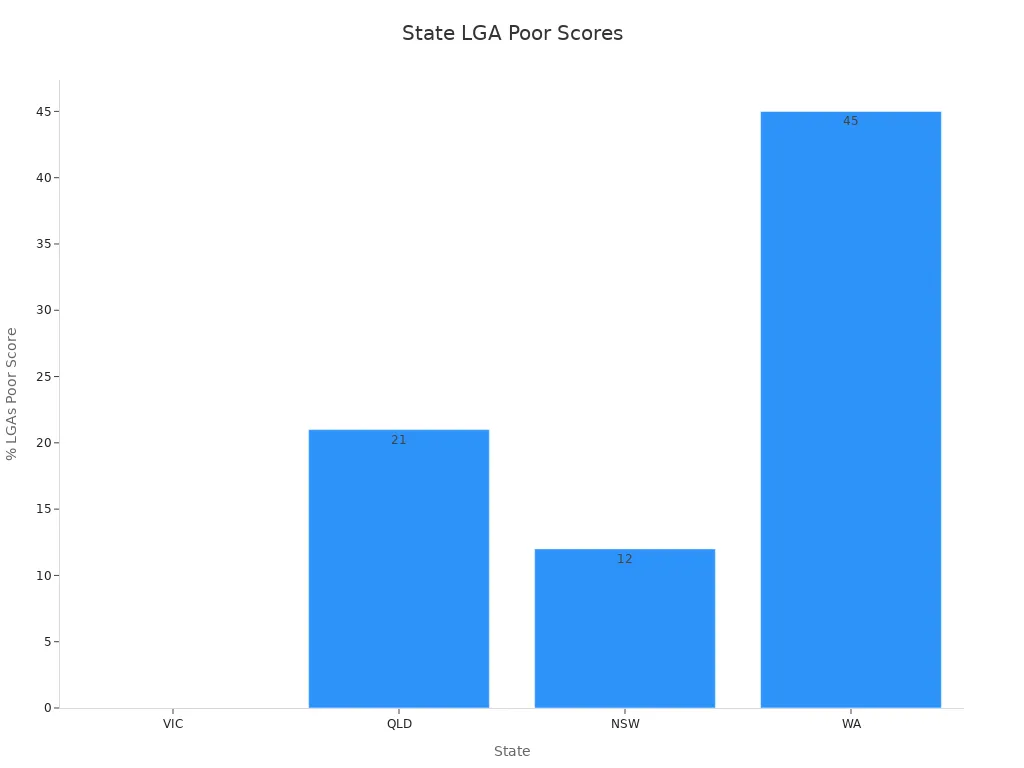
Victoria does very well and almost all councils have good scores. Western Australia has more councils with low scores. This can make it harder for them to manage signs and warning systems at stock crossings.
Permit or approval requirements across states
Permit rules for stock crossing signs are different in each state. ビクトリアで, landowners often need council approval before putting up regulatory signs. Queensland sometimes lets landowners put up signs without a permit, but they must follow state rules. New South Wales usually needs a permit, especially for folding stop signs. Western Australia gives rural councils more choice, but many still want approval for new regulatory signs. こういった違いがあるため、, farmers and land managers must always check local rules before putting up any signs or warning devices.
注記: Councils might also have extra rules for where to put signs or ask for special training if you use folding stop signs.
Local council responsibilities and discretion
Local councils have a big job in keeping stock crossings safe. They choose where to put regulatory and warning signs. Councils look at the road, 渋滞, and how often animals cross. Some councils have more staff and money, so they can check and fix signs more often. Small or remote councils may not have enough people, so it is harder to keep up. Councils also help landowners know when to use regulatory signs or just a warning sign. Good support from councils helps make roads safer for everyone.
Sign Selection Tips for Rural Safety and Stock Management
When to choose R1-V1 vs R1-V6
Choosing the right signs at a stock crossing helps protect both pedestrians and animals. The R1-V1 folding stop sign works best when animals cross the road at different times. Farmers can put this sign up only when needed. The R1-V6 permanent give way to stock sign suits places where animals cross often and drivers can see clearly. This sign tells drivers to give way to animals or pedestrians if they are present. Councils often recommend the R1-V6 sign for crossings with regular use and good visibility.
ヒント: Always check local rules before installing any signs to support road safety.
Factors to consider: stock type, 道路速度, frequency
Several factors help decide which signs to use. The type of animals matters. Cattle move slowly, so drivers need more warning. Sheep or horses may cross faster. Road speed also affects sign choice. 速い道路で, drivers need more time to see and react to signs. The frequency of crossings is important. If animals cross daily, a permanent give way sign may work best. For rare crossings, a folding stop sign gives better control.
| 要素 | R1-V1 Folding STOP | R1-V6 GIVE WAY TO STOCK |
|---|---|---|
| Stock type | All types | All types |
| 道路速度 | Low to medium | Medium to high |
| 頻度 | Occasional | 頻繁 |
Enhancing safety with supplementary signs and lights
Adding extra signs and lights can improve safety for pedestrians and drivers. Warning signs placed before the crossing tell drivers to slow down. Flashing lights or flags make the area more visible, especially in poor weather. Councils may use advance warning signs 150 に 300 metres before the crossing. These tools help drivers prepare to give way and protect everyone on the road.
Councils and landowners should review their crossings often to keep all signs and warning devices in good condition.
Installation Tips for Stock Crossing Signs
Correct height and lateral positioning
Putting road safety signs in the right place helps everyone see them. The bottom of each sign should be at least 1500mm above the ground. This makes sure drivers in cars and trucks can see the signs. Each sign should be at least 600mm from the road’s edge. This keeps signs safe from cars and gives people room to walk. Good placement helps warning signs stand out in the country. It is important because weather can change how well you see.
For more tips on proper installation, 身長も含めて, 角度, and visibility in different conditions, 私たちのブログを読んでください: 交通標識を設置するためのベストプラクティス: 高さと角度の考慮事項.
Reflective material requirements
Signs need to be easy to see at night or in bad weather. All stock crossing signs should use Class 1W reflective sheeting. This material bounces car headlights back to drivers. It helps people see the signs from far away. Pedestrians and cyclists can also see these signs after dark. Councils check the signs to make sure they are still bright and safe. If the reflective part is damaged or faded, the sign does not work as well.
Want to know more about how reflective materials are classified and used in Australia? ブログをご覧ください: オーストラリアの反射型交通標識シート基準の概要.
Optional accessories: flags, ソーラーライト, advance signs
Extra things can help make signs easier to see. Bright flags can be added to warning signs during the day. Solar lights help drivers see signs at night or in fog. Advance signs can go 150 に 300 metres before the crossing. These give drivers more time to slow down. These extra signs and lights help stop crashes and keep everyone safe.
注記: Using the right extras with stock crossing signs makes all road signs work better in the country.
Where to Buy Compliant R1-V1 and R1-V6 Signs
Choosing a certified sign supplier
Farmers and land managers must pick a certified supplier for R1-V1 or R1-V6 signs. Certified suppliers follow strict rules when making traffic signs. They use tough materials that last in bad weather. Many suppliers show their certificates on their websites. People can ask to see proof before they buy. A good supplier will answer questions and help you choose the right signs for each crossing.
Not sure how to tell if a supplier is right for you? 私たちのブログを読んでください: サプライヤの最良の安全標識を選択する方法 2025.
ヒント: Pick suppliers like オプトラフィック who give clear instructions and help after you buy.
Ensuring compliance with AS and MUTCD standards
All traffic signs at stock crossings must follow オーストラリアの基準 (として 1742) 均一な交通制御装置のマニュアル (mutcd). These rules set the size, 色, and reflectiveness for each sign. Signs that follow these rules help keep roads safe. Councils often check if signs meet the rules before letting you put them up. Farmers should ask suppliers if their signs meet both AS and MUTCD rules. This step helps stop problems with local councils.
| 標準 | What it Covers | なぜそれが重要なのか |
|---|---|---|
| として 1742 | Design and placement | Keeps drivers safe |
| mutcd | Uniform appearance | Stops driver confusion |
Custom options for unique agricultural needs
Some farms need special signs for their stock crossings. Suppliers can make custom signs for these needs. 例えば, a farm with workers who speak two languages may need signs in both. Some farms want bigger signs for busy roads. Some suppliers offer signs with extras like solar lights or special mounting kits. Custom signs help make every crossing as safe as possible.
注記: Custom traffic signs must still follow all safety rules.
What Export Clients Need to Know
Do’s and don’ts for international deployments
Export clients have some important things to remember when using Australian stock crossing signs in other countries. They must always check the road rules in the country before putting up any signs. Some places accept Australian Standards, but others have their own rules. Clients should only use approved folding STOP signs and GIVE WAY TO STOCK signs at stock crossings. They must not use black dot STOP signs or any sign not listed in the standards.
Do’s:
- Check the local laws before using any road sign.
- Only use folding STOP and GIVE WAY TO STOCK signs that follow the rules.
- ドライバーの目に付きやすい場所に標識を設置する.
Don’ts:
- Never leave folding STOP signs open if no animals are crossing.
- Do not use warning signs instead of regulatory signs.
- Never put up signs without checking if you need approval.
ヒント: Always ask the local authorities for help before putting up new signs.
Educating clients on proper folding sign usage
Clients need to know how to use folding STOP signs the right way. They must open the sign just before animals start to cross the road. After the last animal crosses, they must fold the sign down straight away. This helps drivers pay attention and stops confusion. It is important to train staff on how to use the signs. Some suppliers give guides or videos to show how to do this.
A simple checklist for folding STOP sign use:
- Get the crossing area ready.
- Open the folding STOP sign.
- Move the animals across the road.
- Fold the sign down after all animals have crossed.
Good training keeps everyone safe and helps people follow the law.
Packaging compliance documentation with shipments
Export clients should always get compliance documents with their shipments. These papers show the signs meet Australian Standards and other rules. The documents should have instructions for putting up the signs, guides for folding signs, and certificates to prove they follow the rules. Customs officers or local councils might want to see these papers before letting the signs be used on public roads.
| ドキュメントタイプ | 目的 |
|---|---|
| Compliance certificate | Shows the sign meets the rules |
| Installation guide | Tells how to put up the sign |
| Operation instructions | Explains how to fold the sign |
Keeping all the papers together makes it easy to show you follow the rules if someone asks.
Farmers and land managers use folding STOP signs when animals are crossing. Permanent GIVE WAY signs are best for crossings used often and easy to see. Picking the right sign and following local rules keeps everyone safer. If they are not sure, they should ask local authorities for help. The right signs protect people on the road and animals too.
よくある質問
What is the main difference between a folding STOP sign and a permanent GIVE WAY sign?
A folding STOP sign only shows when animals are crossing. A permanent GIVE WAY sign stays up all the time. Drivers must stop at the STOP sign but only yield at the GIVE WAY sign if animals are present.
Do landowners need council approval to install stock crossing signs?
Many councils require approval before installing regulatory signs. Landowners should always check with their local council. Some areas also ask for training or a permit, especially for folding STOP signs.
Can drivers ignore a GIVE WAY TO STOCK sign if no animals are visible?
Drivers must slow down and prepare to stop when they see a GIVE WAY TO STOCK sign. If no animals are present, they may proceed with caution. The sign reminds drivers to stay alert for livestock.
How often should landowners check their stock crossing signs?
Landowners should inspect signs regularly. 彼らはダメージを探す必要がある, フェード, or anything blocking the sign. Good practice includes checking after storms or heavy farm work.
Are extra warning devices like flags or lights required?
Extra devices such as flags or solar lights are not always required. They help make crossings safer, 特に交通量の多い道路や速い道路では. Councils may recommend them for better visibility.

